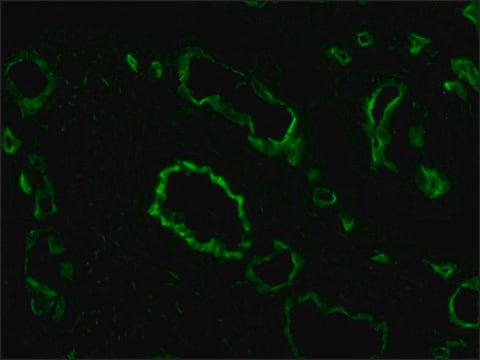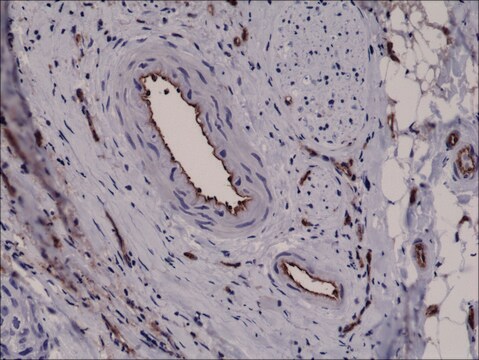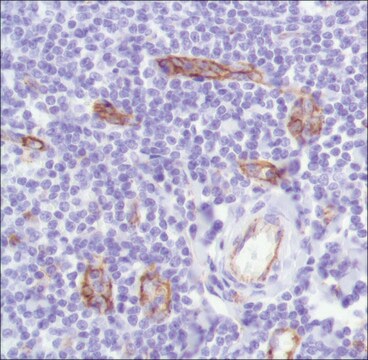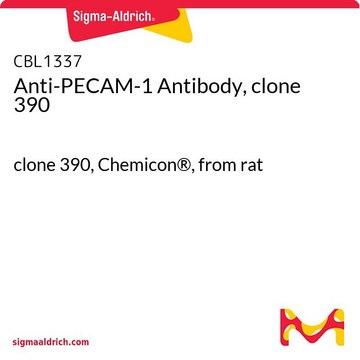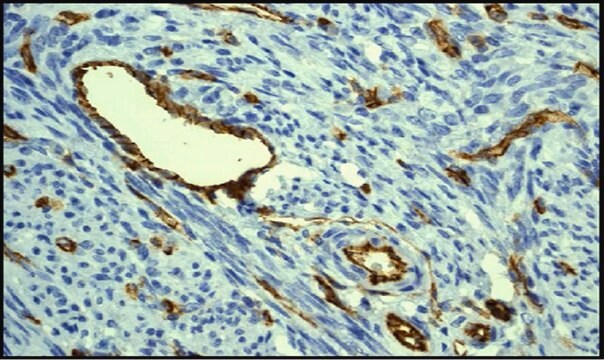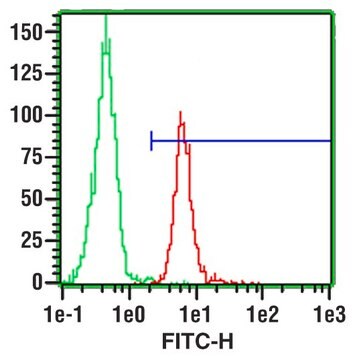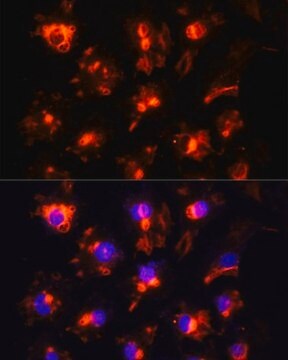MAB1393-I
Anti-PECAM-1 (CD31) Antibody, clone TLD-3A12
clone TLD-3A12, from mouse
Synonim(y):
Platelet endothelial cell adhesion molecule, CD31
About This Item
Polecane produkty
pochodzenie biologiczne
mouse
Poziom jakości
forma przeciwciała
purified immunoglobulin
rodzaj przeciwciała
primary antibodies
klon
TLD-3A12, monoclonal
reaktywność gatunkowa
human, rat
metody
ELISA: suitable
flow cytometry: suitable
immunohistochemistry (formalin-fixed, paraffin-embedded sections): suitable
western blot: suitable
izotyp
IgG1κ
numer dostępu NCBI
numer dostępu UniProt
Warunki transportu
ambient
docelowa modyfikacja potranslacyjna
unmodified
informacje o genach
human ... PECAM1(5175)
rat ... Pecam1(29583)
Opis ogólny
Specyficzność
Immunogen
Zastosowanie
Flow Cytometry Analysis: 1 µg from a representative lot detected PECAM-1 (CD31) in one million rat splenocytes.
Western Blotting Analysis: A representative lot detected PECAM-1 (CD31) in Western Blotting applications (Male, D., et. al. (1995). Immunology. 84(3):453-60).
ELISA Analysis: A representative lot detected PECAM-1 (CD31) in ELISA applications (Male, D., et. al. (1995). Immunology. 84(3):453-60; Williams, K.C., et. al. (1996). J Neurosci Res. 45(6):747-57).
Affects Function: A representative lot of PECAM-1 (CD31) Affected Function (Williams, K.C., et. al. (1996). J Neurosci Res. 45(6):747-57).
Immunohistochemistry Analysis: A representative lot detected PECAM-1 (CD31) in Immunohistochemistry applications (Williams, K.C., et. al. (1996). J Neurosci Res. 45(6):747-57).
Cell Structure
Jakość
Immunohistochemistry Analysis: A 1:250 dilution of this antibody detected PECAM-1 (CD31) in human tonsil tissue.
Opis wartości docelowych
Postać fizyczna
Przechowywanie i stabilność
Inne uwagi
Oświadczenie o zrzeczeniu się odpowiedzialności
Nie możesz znaleźć właściwego produktu?
Wypróbuj nasz Narzędzie selektora produktów.
Kod klasy składowania
12 - Non Combustible Liquids
Klasa zagrożenia wodnego (WGK)
WGK 2
Temperatura zapłonu (°F)
Not applicable
Temperatura zapłonu (°C)
Not applicable
Certyfikaty analizy (CoA)
Poszukaj Certyfikaty analizy (CoA), wpisując numer partii/serii produktów. Numery serii i partii można znaleźć na etykiecie produktu po słowach „seria” lub „partia”.
Masz już ten produkt?
Dokumenty związane z niedawno zakupionymi produktami zostały zamieszczone w Bibliotece dokumentów.
Nasz zespół naukowców ma doświadczenie we wszystkich obszarach badań, w tym w naukach przyrodniczych, materiałoznawstwie, syntezie chemicznej, chromatografii, analityce i wielu innych dziedzinach.
Skontaktuj się z zespołem ds. pomocy technicznej